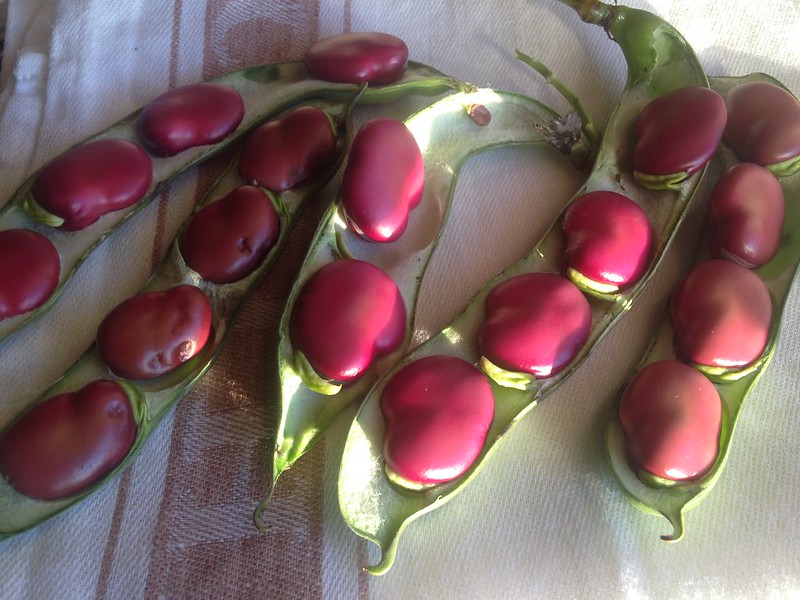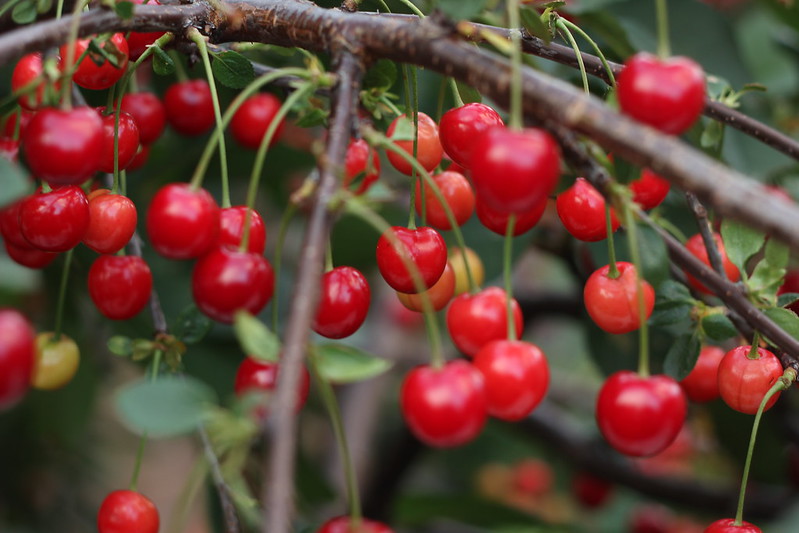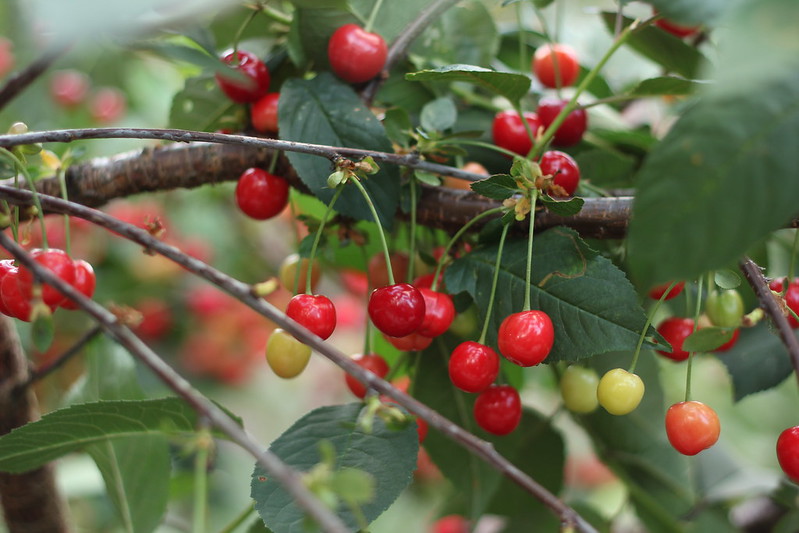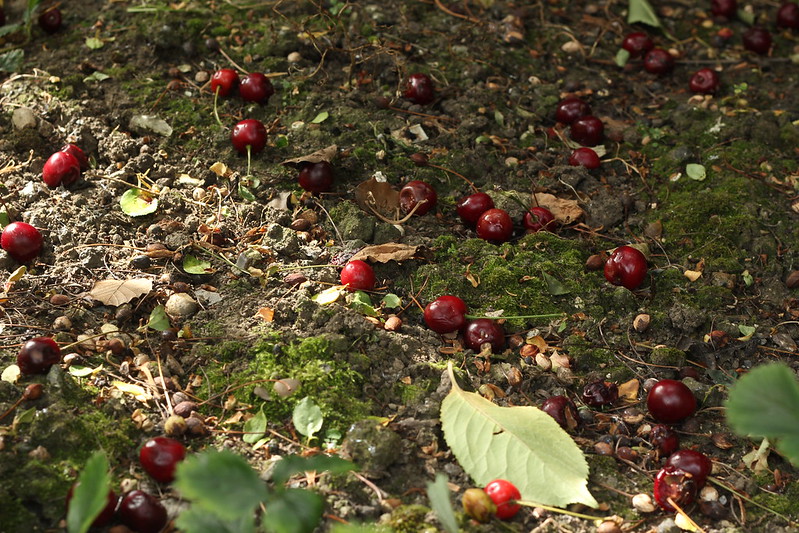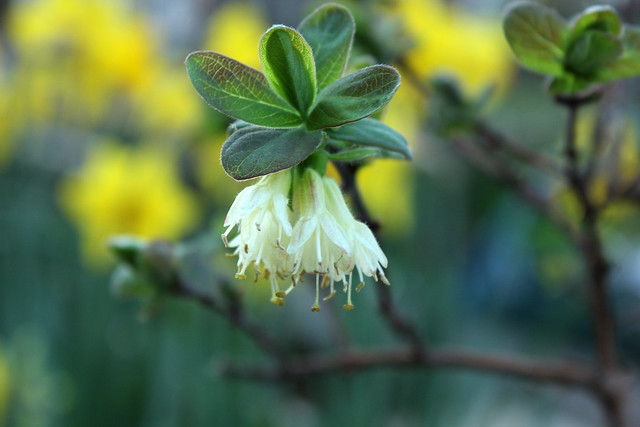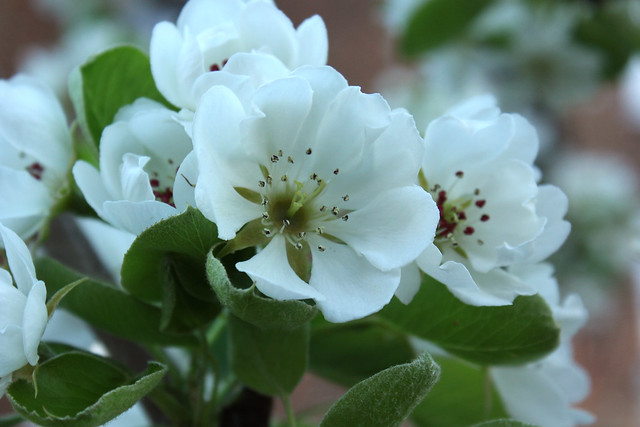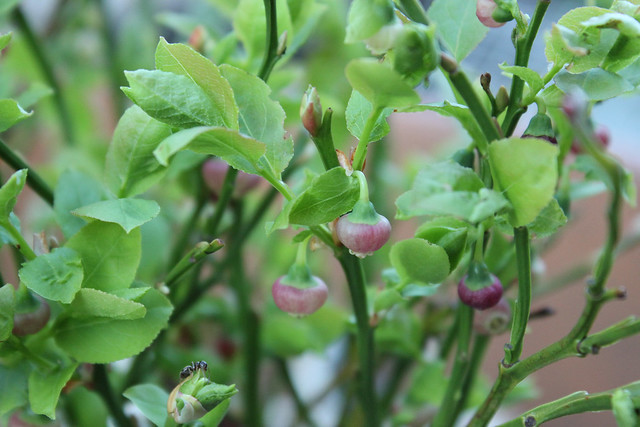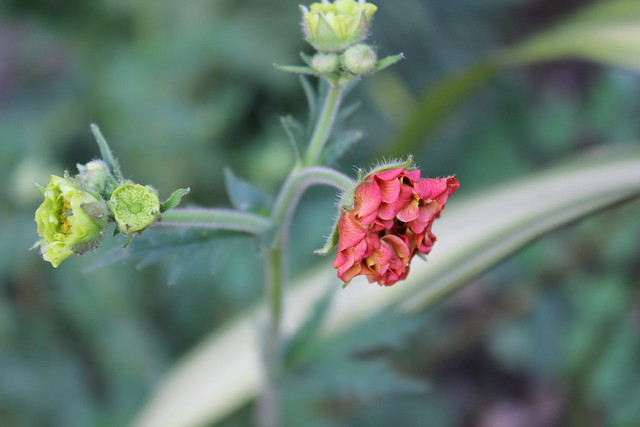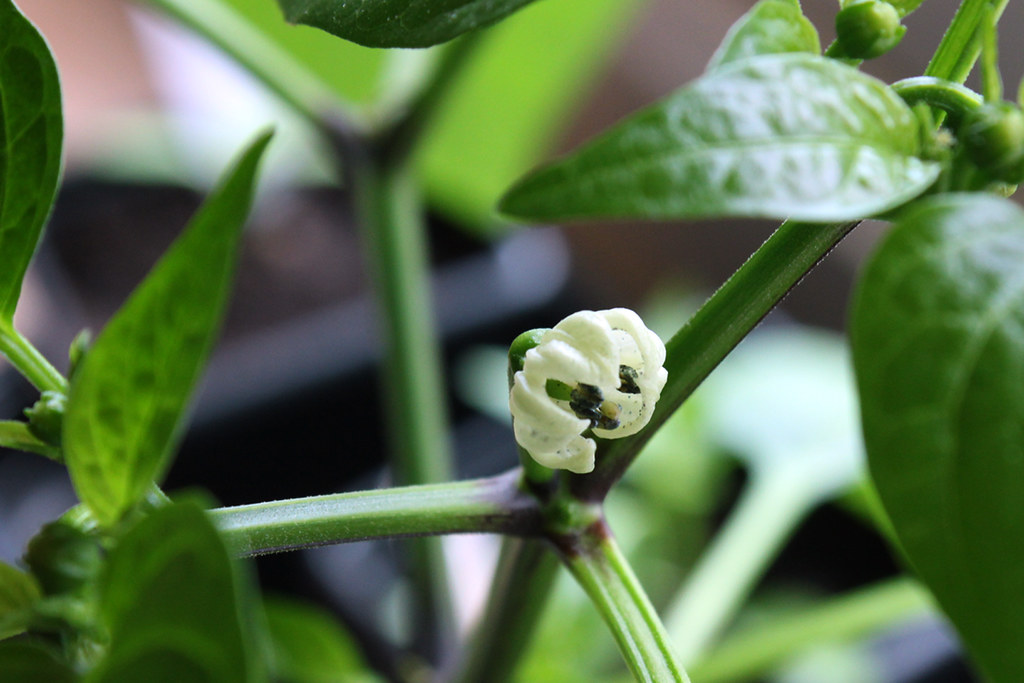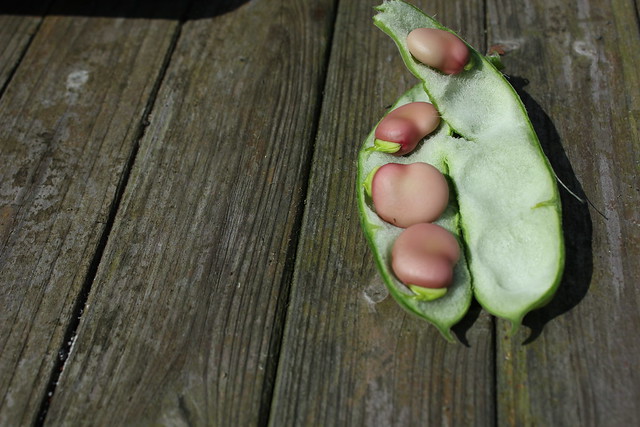
I haven't written much about the veg patch for a while so I nipped down to the garden on Friday evening to take a few snaps and found that not only were strong winds whipping the plants to and fro but it was really really chilly outside. I went home and turned the heating on ... in July!! What
is happening with our summer?
I persevered on Saturday morning (equally chilly out) and, using a fast shutter speed on my camera, focusing manually and checking the focus with a little button on my Canon that allows me to zoom in on the view screen, I managed to get snaps that show where I'm at in the veg patch.

There's some good, some not-so-good and then some things that I've got behind with. Cherries are going to be brilliant again this year. Even more so than last year because the rainfall has kept the 'June drop' to a minimum. (Good, because Morello cherry chutney is scrumptious. I hope I've written the recipe down.) Plus, all this extra water seems to have brought the
autumn fruiting raspberries on a treat - I've already had a small handful!
Yet again, there are no signs of any plums (while the tiny Victoria plum tree at the allotment has lots of fruit), only a few pears (but at least that's better than none!) and only one of the apple trees has fruit. Hmm, wonder what's going on there? The quince is looking good and has held on to 8 quinces so far and my Physalis bush, aka chinese gooseberry, (grown from a seed in 2013) is just starting to produce flowers. I love this plant; the leaves are so velvety and the fruit delicious. Well worth growing.

I'm having to start again with curly kale and cavolo nero as the whole lot has been mollusc munched into oblivion but the chard, spinach and broccoli are doing well and haven't been touched. Odd. My courgette plants were grown in pots on the balcony as a result of all this midnight munching and are now ready to go out. Late, I know. Still, you never know, it might be alright - the only race I'm running is the one against autumn!
Equally, only
one of my climbing beans has been slugged. The beans were sown late and are growing extremely well. I sowed two beans, slightly apart, in each position in case of slug attack so, with luck, I'll have plenty of beans this year. I'm growing 'Cobra' and 'Barlotto Lingua di Fuoco' - both from Chiltern Seeds. I think I'll try some of these up at the allotment as well; they seem to be from good, vigorous stock!
I've been snacking on broad beans for a few weeks now (like everyone else, I assume!). I like to munch on the raw baby beans as I wander round the garden. The remaining pods are bulking up nicely (again, thank you rain) and the plants are still aphid free with no squishing or squirting. Amazing. I sowed a second crop of beans in mid-May, this time a heritage bean 'Crimson Flowered' from Pennards and 'Red Epicure' (right, above) which Marshalls Seeds sent me to try. I wanted to give Red Epicure a go as the beans are red skinned and
stay red when lightly steamed, allegedly. So far, all I can report is that the plants are strong and healthy and have a lot more flowers than my Karmazyn beans. Watch this space for more about these as we go.

What can I say about red orache? It comes back every year from seeds blown across the garden, doing me proud and filling a few gaps - red orache (
Atriplex rubra) is both edible (aka mountain spinach) and ornamental so I've moved a few seedlings over into the 'drought' border and left a few behind in the veg patch. And remember the
achocha that crashed to the ground at the end of last summer? A few of the seeds must have popped out of the pods because I've got 3 unexpected plants that need something to climb up - and soon!
The asparagus crowns are now only putting out narrow stems which I'll let grow into ferns so the crowns can re-energise for next year; I'll carefully move the crowns up to the allotment in the winter in the hope that they'll fare better up there. This year I must have had only a dozen spears from five crowns over a six week period. Their very existence was in jeopardy until I got the allotment plot as the bed could be better used for salad leaves (slugs notwithstanding).
And, finally, because this is such a long post (sorry), I'm growing rainbow carrots and a radish called 'Caro' - how could I
not grow that one! :oD
So, there we are - the not so quick round up. And I didn't even mention the flowers and the herbs which are just amazing this year and giving me lots of joy. I'm wondering how everyone else is faring - slugged out, coping or already harvesting masses of edibles?
The forecast is dry for this week and I have a few days off work so this could be a good week for gardening. And, tomorrow, I'm off to Hampton Court flower show. Have a good week, everyone!



